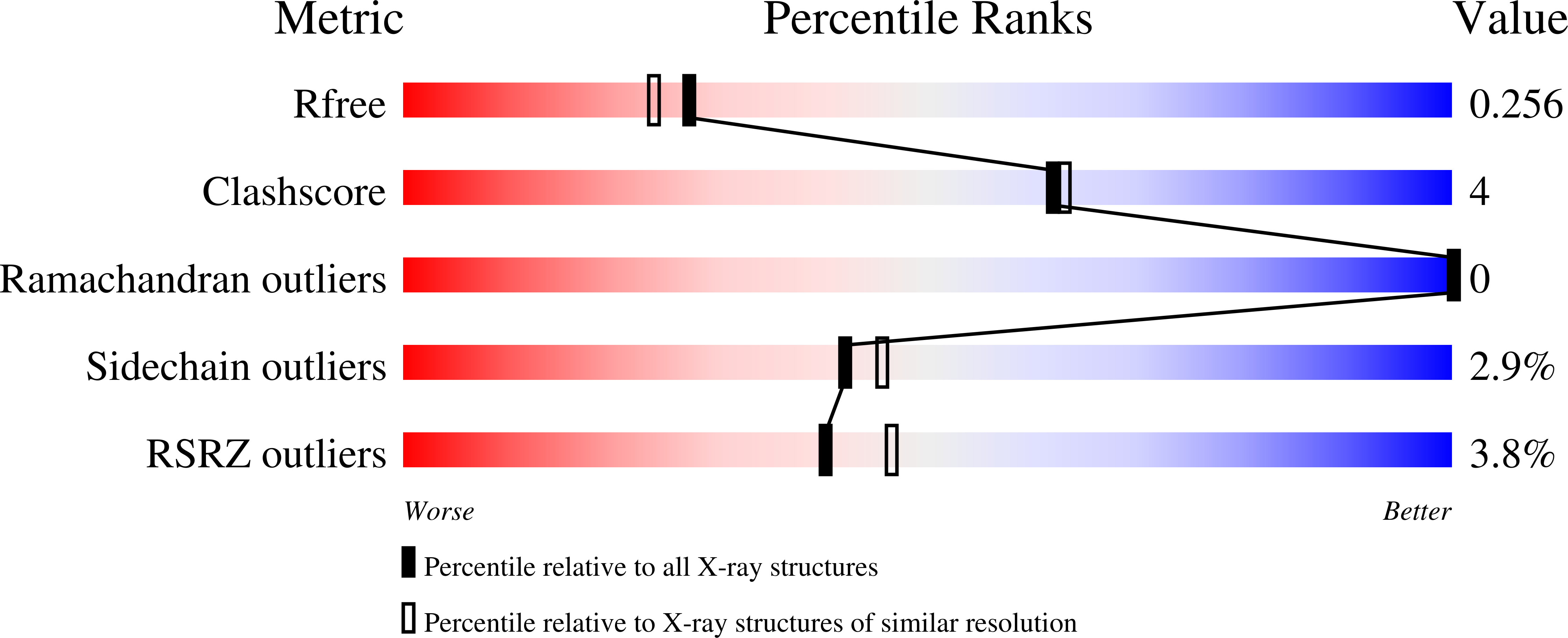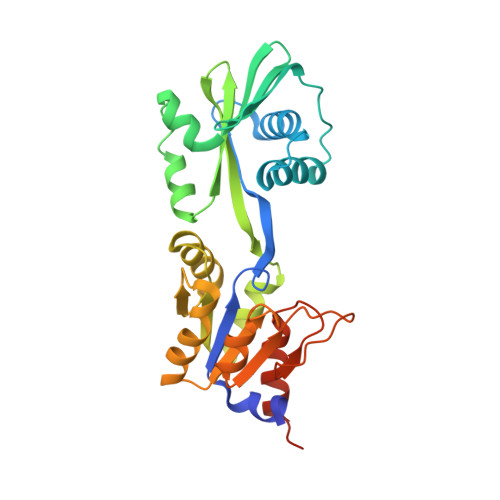Conformations of the apo-, substrate-bound and phosphate-bound ATP-binding domain of the Cu(II) ATPase CopB illustrate coupling of domain movement to the catalytic cycle.
Jayakanthan, S., Roberts, S.A., Weichsel, A., Arguello, J.M., McEvoy, M.M.(2012) Biosci Rep 32: 443-453
- PubMed: 22663904
- DOI: https://doi.org/10.1042/BSR20120048
- Primary Citation of Related Structures:
3SKX, 3SKY - PubMed Abstract:
Heavy metal P1B-type ATPases play a critical role in cell survival by maintaining appropriate intracellular metal concentrations. Archaeoglobus fulgidus CopB is a member of this family that transports Cu(II) from the cytoplasm to the exterior of the cell using ATP as energy source. CopB has a 264 amino acid ATPBD (ATP-binding domain) that is essential for ATP binding and hydrolysis as well as ultimately transducing the energy to the transmembrane metal-binding site for metal occlusion and export. The relevant conformations of this domain during the different steps of the catalytic cycle are still under discussion. Through crystal structures of the apo- and phosphate-bound ATPBDs, with limited proteolysis and fluorescence studies of the apo- and substrate-bound states, we show that the isolated ATPBD of CopB cycles from an open conformation in the apo-state to a closed conformation in the substrate-bound state, then returns to an open conformation suitable for product release. The present work is the first structural report of an ATPBD with its physiologically relevant product (phosphate) bound. The solution studies we have performed help resolve questions on the potential influence of crystal packing on domain conformation. These results explain how phosphate is co-ordinated in ATPase transporters and give an insight into the physiologically relevant conformation of the ATPBD at different steps of the catalytic cycle.
Organizational Affiliation:
Department of Chemistry and Biochemistry, University of Arizona, Tucson, AZ 85721, U.S.A.
















